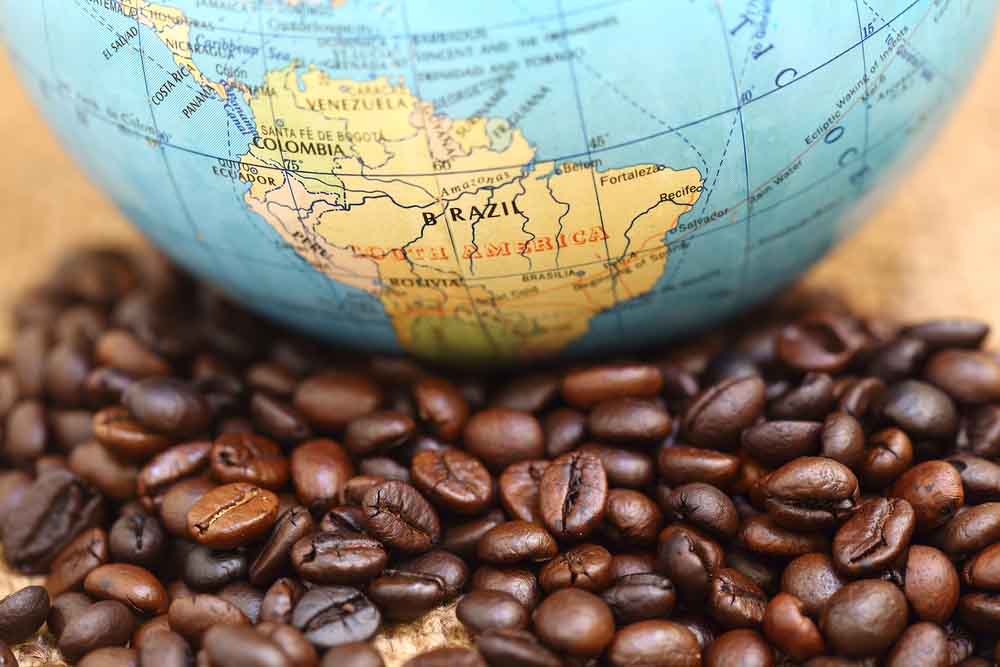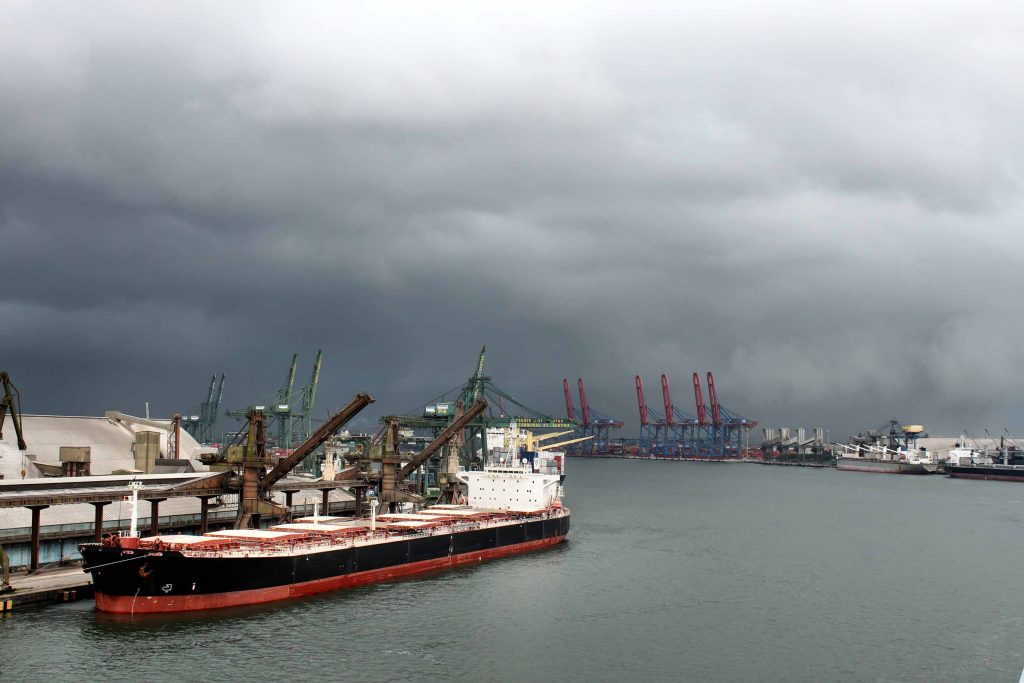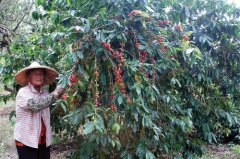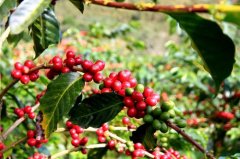The Source of Mamba Coffee Mambo the prosperity of coffee beans-Sponsored in Sao Paulo, Brazil
For professional baristas, please follow the coffee workshop (Wechat official account cafe_style)
Whether it is the gorgeous football skills, the lively and joyous samba dance, or the lively and colorful carnival, the association path in the mind naturally leads to Brazil, the largest country in South America. Passionate, easy-going nature, so that every Brazilian always looks like a "hyperactive", everyone is alive, as if there is no time to calm down, they can sit down and drink a cup of coffee. Even, several cups a day!
Brazil, currently the world's largest coffee producer, accounts for about 1/3 of the world's total output. There are 26 states and 1 federal district in the country, and 17 states produce coffee, of which four states, including Parana, Sao Paulo, Minas Gerais and Espirito Santo, account for 98 per cent of the country's total output.

Unlike the general environment in which coffee beans grow, Brazilian coffee is grown at lower elevations and grows directly in the sun to make coffee beans grow faster. The vast majority of Brazilian coffee is sun-dried rather than washed. It tastes mellow, smooth into the throat, low-grade bitterness and unforgettable sweet aftertaste, which is suitable for mixing with other coffees.
Brazil not only produces coffee, but also loves coffee to the extreme. Each of them drinks an average of 1200 cups of coffee a year, with a capacity of 50 to 80 milliliters per cup, making it the second largest coffee consumer in the world after the United States. For the first meal of the day, Brazilians call breakfast "morning coffee" (cafe da manha) even if they don't drink coffee.
The most famous Brazilian coffee is "Santos Coffee" produced in the state of Sao Paulo. Located in the southeastern state of Sao Paulo, the capital city of Sao Paulo (Sao Paulo), in addition to being the largest city in Brazil, with a population of more than 11 million, it is also the largest city in the southern hemisphere. Local people are used to calling it "paulistano". During the 19th century, Sao Paulo became the richest city in South America because it relied on the "Port of Santos" to export coffee and became the prosperous city it is today.

The famous "Santos Coffee" is named after Santos, the outer port of Sao Paulo.
Santos coffee is produced by Coffee Arabica's Bourbon, so it is also known as "Bourbon Santos". Its neutral taste, warm and mellow taste, moderate acidity and concentration, elegant flavor, conquers the taste buds of many coffee lovers, and is regarded as the backbone of coffee. It can be drunk alone or mixed with other coffee beans to form a comprehensive coffee.
Among them, "Mamba Coffee (Mambo)" can be called the best combination of comprehensive coffee. Take the mellow Brazilian coffee beans as the base, with the rich, bitter Mandeling coffee, roughly in the proportion of 1:1 (different according to individual taste), taste carefully, you can find the deep texture and sweet flavor of Mamba coffee.
Important Notice :
前街咖啡 FrontStreet Coffee has moved to new addredd:
FrontStreet Coffee Address: 315,Donghua East Road,GuangZhou
Tel:020 38364473
- Prev

What kind of Pakamara coffee beans are coming from? Can Pakamara be compared with Rose Sharpie?
Professional barista exchanges, please pay attention to coffee workshop (Weixin Official Accounts cafe_style) Panama Don Julian Pacamara Washed won the Best Panama Coffee Award for 7 consecutive years! Run by Hea Burnesky, a rather talented Panamanian estate owner, there are two varieties of raw beans under the period, both with different names.
- Next

The century-old coffee farm, which is as famous as the Emerald Manor, is introduced in detail in Shippa Camara.
For the exchange of professional baristas, please follow the coffee workshop (Wechat official account cafe_style) Guatemala Coffee Incht Manor bidding batch EI-08 Pacamara Water treatment method Guatemala 2017 El Injerto Estate Lot EI08 Reserva de la FAMILIA-Pandora Pacamara and Emerald Manor famous Centennial Coffee Manor! Have 6 COE crowns
Related
- Detailed explanation of Jadeite planting Land in Panamanian Jadeite Manor introduction to the grading system of Jadeite competitive bidding, Red bid, Green bid and Rose Summer
- Story of Coffee planting in Brenka region of Costa Rica Stonehenge Manor anaerobic heavy honey treatment of flavor mouth
- What's on the barrel of Blue Mountain Coffee beans?
- Can American coffee also pull flowers? How to use hot American style to pull out a good-looking pattern?
- Can you make a cold extract with coffee beans? What is the right proportion for cold-extracted coffee formula?
- Indonesian PWN Gold Mandrine Coffee Origin Features Flavor How to Chong? Mandolin coffee is American.
- A brief introduction to the flavor characteristics of Brazilian yellow bourbon coffee beans
- What is the effect of different water quality on the flavor of cold-extracted coffee? What kind of water is best for brewing coffee?
- Why do you think of Rose Summer whenever you mention Panamanian coffee?
- Introduction to the characteristics of authentic blue mountain coffee bean producing areas? What is the CIB Coffee Authority in Jamaica?

